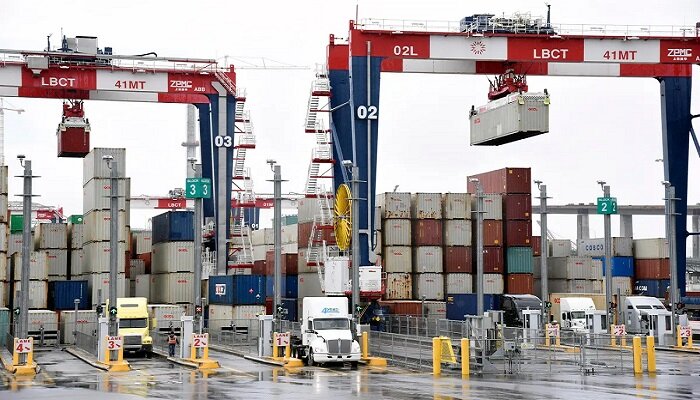The U.S. President Joe Biden has gone ahead and signed an executive order with plans to spend $20 billion across the next five years so as to bring manufacturing of ship-to-shore cranes back to the US, even as the White House went on to raise alarms about Chinese-made cranes being used to launch cyberattacks throughout America’s port infrastructure. As per an official release, PACECO, which is a U.S.-based subsidiary of Mitsui from Japan, happens to be planning to onshore U.S. manufacturing capacity in the case of its crane production. Appparently, PACECO happens to have a deep history in the container shipping sector as it was the one which manufactured the first ship-to-shore dedicated container crane in 1958, and it went on to continue with its U.S.-based crane manufacturing until the late 1980s.
It is well to be noted that PACECO is looking out to partner with certain other trusted manufacturing companies in order to bring port crane manufacturing capacities back to the U.S. for the very first time in 30 years, thereby pending the final site as well as partner selection. The actions are indeed clear examples of the President’s work in order to invest in America, safeguard the country’s supply chains, and, at the same time, strengthen the cybersecurity of the country’s critical infrastructure against 21st century risks, which are the priorities his administration has increasingly stressed on relentlessly ever since taking office.
It is well to be noted that America’s prosperity happens to be directly associated with maritime trade as well as the integrated network of ports, terminals, waterways, vessels, as well as land-side connections that go on to constitute the nation’s Marine Transportation System- MTS. This intricate system goes ahead and supports $5.4 trillion worth of economic activity every year, thereby contributing to the employment of over 31 million Americans, and also supports almost 95% of cargo that’s entering the U.S. Tackling port cyber security, the U.S. Coast Guard will now be having an express authority so as to respond to the malicious cyber activity within the nation’s MTS by way of requiring vessels as well as waterfront facilities so as to mitigate cyber conditions that may as well endanger the security of a vessel, facility, or even the harbor, the update added. The Executive Order will go on to institute compulsory reporting when it comes to cyber incidents or even active cyber threats that go on to endanger any vessel, harbor, port, or even a waterfront facility. Moreover, the Coast Guard will now happen to have the authority so as to control the movement of vessels that go ahead and present a known or probably suspected cyber threat to the U.S. maritime infrastructure, and be able to have an inspection of those vessels as well as facilities that go on to pose a threat to cybersecurity. The U.S. Coast Guard will apparently go ahead and issue a Maritime Security Directive concerning the cyber risk management actions for ship-to-shore cranes that are manufactured by the People’s Republic of China and are located at U.S. commercial strategic seaports. Owners as well as operators of such cranes must go on to acknowledge the directive and, at the same time, take a series of actions on these cranes, as well as associated information technology along with operational technology systems.
The fact is that this action is for sure a vital step when it comes to securing maritime infrastructure’s digital ecosystem, as well as addressing numerous vulnerabilities that have gone on to be identified in the updated U.S. Maritime Advisory, 2024-00X- the Worldwide Foreign Adversarial Technological, Physical as well as Cyber Influence. It is well to be noted that in early 2023, U.S. defence officials went ahead and expressed their worries about Chinese ship-to-shore crane manufacturer Shanghai Zhenhua Heavy Industries- ZPMC stating that it could be very well used by Beijing as a probable spying tool, thereby leading to more pressure on the administration from Capitol Hill. At that time, China said that the concerns happened to be paranoia-driven, as reported by CNBC.


































